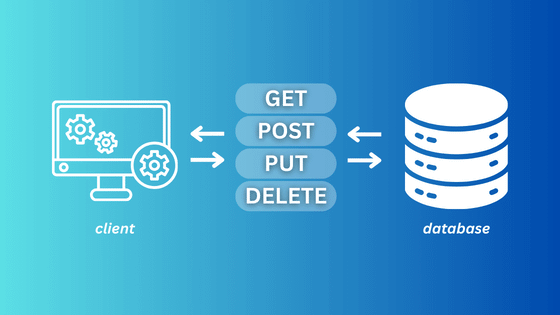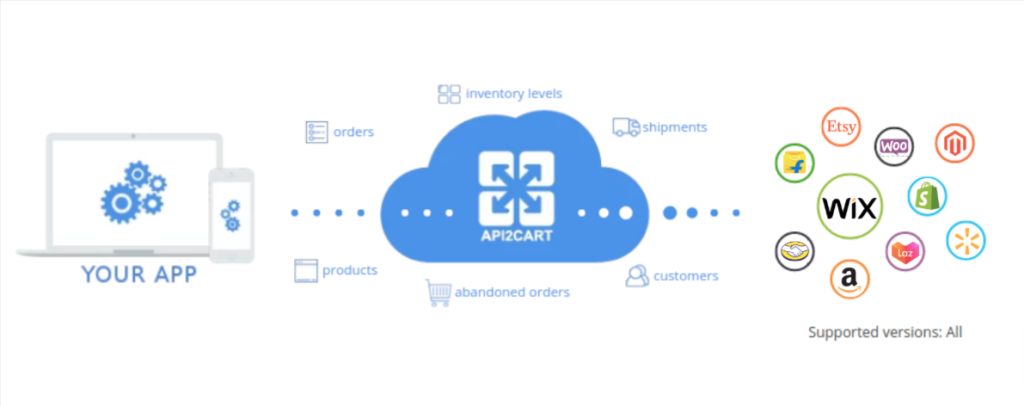
Understand the REST (Representational State Transfer) model and how REST architecture helps in the communication between web entities.
Representational state transfer (REST) is a software architectural style consisting of a set of architectural constraints applied to components, connectors, and data elements, within a distributed hypermedia system. REST ignores the details of component implementation and protocol syntax in order to focus on the roles of components, the constraints upon their interaction with other components, and their interpretation of significant data elements.” - Wikipedia.
This is the most common definition of REST that is given by Wikipedia. But sometimes it seems to be a little bit hard to understand. Let's try to break down complex REST.
What Is REST?
In the simplest term, REST is a set of principles that assign how HTTP and URLs Web standards are used. The main idea is that if you comply with REST principles while developing your application you will have a system that uses the Web’s architecture to your benefit.
In order to connect computers together through a network and talking the same language, hundreds of methods have grown up during the years. Each method or protocol address computer communication in a specific way. For instance, you have probably heard about such technologies as SOAP, JMS or XML-RPC. SOAP requires a plenty amount of data and big computer capacity which is not suitable for the limited mobile apps’ resources. JMS is a kind of formal communication known as massaging between computers in a network which is mostly related to Java applications. XML-RPC also makes procedure calls over the Internet and has the same problems as SOAP. However, SOAP or XML-RPC can be easy if you have appropriate tools, they are a kind of an old school and are favored the approach of Java developers.
In contrast to these methods REST allows to pass a minimum amount of data through the same mechanism that the web determines. It avoides a lot of difficulties provided by fatter protocols. Moreover, it enables developers to create programs that access data via APIs in a proper way to make them work in environments with variable network speed and limited computing capacity.
Key Terms Related to REST
The principle of REST’s work is similar to the website in a browser. The resource is shown to the program through a URL. In this case, the program accesses that URL and get the data back. So, let's figure out two main terms: resources and representations. However, they are very simple concepts, one refers to a “thing” you want to talk. On the other hand, the other indicates the “entities” you want to send.

The resource is located at some address to which a computer would like to send information or from which would like to receive it. For this purpose, it is used HTTP methods GET and POST. Furthermore, some resources store information in order to create other resources. One more important thing to understand is that REST supports other HTTP methods. They include PUT, DELETE, OPTIONS, HEAD, TRACE, and CONNECT. But the really important are GET and POST.
GET allows retrieving any kind of representation a resource may provide. POST creates a resource in case when the process of storing information that the server controls. It assigns a unique value or URL in the database.
“Safe” and “idempotent” are also key terms that are connected with REST. When the HTTP method is invoked, the word “safe” means that resource state is unchanged on the server. GET is always safe, it doesn’t matter how many times you retrieve the data, its content won’t change. When talking about POST it appears a little argue. It’s not safe if POST is used to create a resource but if it is used to send a message it is considered to be safe.
The term “idempotent” means that a request can be done multiply, it doesn’t depend on how many times the method is invoked, the result is the same. GET is actually always idempotent. As it was mentioned above POST is mostly dealt with creating or modifying a resource so it’s not idempotent.
Benefits of REST
Using the REST architecture for web apps offers the following advantages:
- Resource-based. REST follows statelessness through resources in contrast to commands and hence, it enhances reliability, performance as well as scalability.
- Simple interface. In REST, every element that participates in the client-server transactions is uniform in the server response in order to provide a clear interface for all the transactions.
- Familiar constructs. REST interactions are centered on constructs that any one using HTTP will be familiar with the operations and the URIs. Having said that, it is important for the developers to understand and remember that REST is not HTTP and has some differences when being implemented.
- Communication. This state of REST based interactions between the server and the clients is communicated by way of numerical HTTP status codes. REST APIs use the following HTTP status codes to detect errors and ease the API monitoring process:
- Language-independent. Developers working on RESTful APIs or web services do not have to stick with any specific language; in fact, HTTP is used.
- Widespread use. It is very popular, and, therefore, many server- and client-side applications use REST.
- 400 error means that the request cannot be served as the request made by the client is improper known as bad request.
- 404 error would mean that, a certain item a user is looking for in a website is not available.This status response code is used when there is an unauthorized request made in a particular system or an application.
- The 200 status response code for a successful request.
- 500 stands for internal server error and this is an internal server error.
Drawbacks of REST
There are some disadvantages of the REST architecture of which developers should be aware:
- Design limitations. However, there are certain restrictions, which are associated with the Architecture design of REST. These are such things as multiple requests over a single TCP connection, different requests for each resource file. Also, it is worth mentioning server request uploads and long HTTP request headers which slow down the loading of the web page. Furthermore, due to loose coupling, flexibility that REST has in terms of design can make REST APIs complex to manage.
- Stateless applications. Since the state-based information is not stored on the server between the request-response cycles, the client is left to perform state management which complicates server updates that don’t involve client side polling or other types of webhooks which transmit data and executable commands between apps.
- Definition. The problem is that REST does not have one implementation that can be considered the reference or a standard by which one can measure whether a design is RESTful or whether a web API is implementation of REST-based principles.
- Data overfetching/underfetching. RESTful services often return large volumes of unnecessary data alongside relevant data. Usually because the service queries have been made to several servers. That makes the time it takes for a client to retrieve all necessary data much longer.
Example of a REST API
API2Cart is a modern REST API that enables the connection of multiple eCommerce platforms with business applications like inventory management, ERP, and shipping software. This API allows the developers to integrate with more than 40 eCommerce platforms. Their list includes Shopify, Magento and WooCommerce and so on. The primary value of API2Cart is in providing easy integration of product catalogs, orders, customers, and other store data with a third-party software. This makes it easier and less time-consuming to coordinate the various APIs for various platforms to operate which can be a tiresome and cumbersome process.

API2Cart service follows RESTful architecture. It makes it convenient and easy to navigate for the developers. JSON along with XML is another data format that the programming language supports to meet the needs of different programmers. API2Cart also places a lot of emphasis on security, with the use of secure encryption and user authentication procedures to ensure that all activity is secure and confidential. Moreover, API2Cart provides API documentation and all round technical support to help developers to integrate and fine-tune their applications seamlessly. Such kind of support and openness makes API2Cart an indispensable solution for developing teams that facing the necessity to enhance their eCommerce functionalities and integrate various platforms.
Conclusion
To sum up, behind the REST term lies a very simple concept of the Web architecture that broadens the functionality in order to satisfy customers’ needs and requirements. It’s very beneficial for developers to be aware of REST especially if they desire to turn their app API to a good Web member.
Here at API2Cart, we use REST API to ensure transparent data interaction. All the methods are very clear in order to provide writability. Moreover, using the web browser line you can get all the necessary data. If you have some questions about methods that our API use, feel free to contact our Support Manager to find out more.



